18. Taking Care of Your iPad
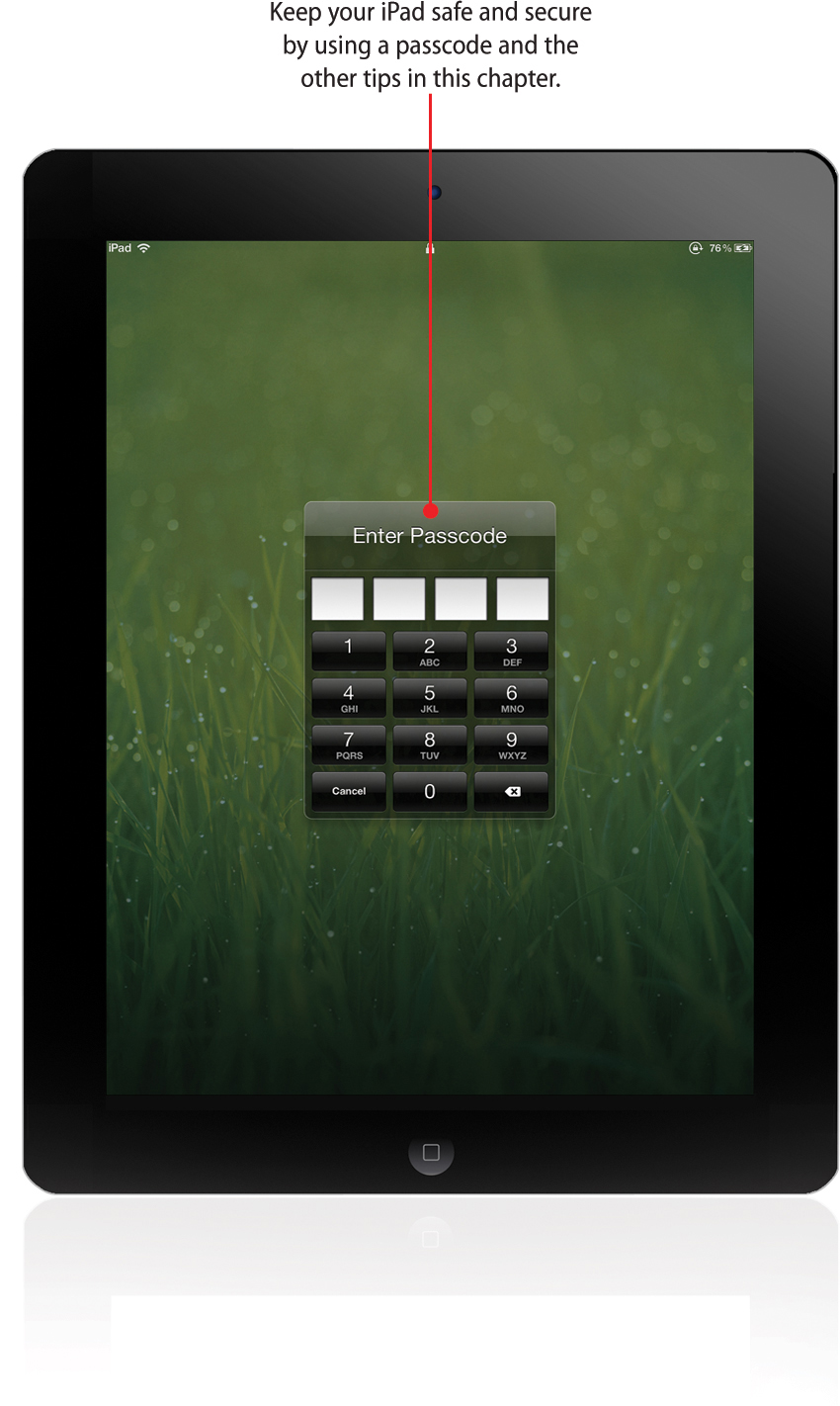
In this chapter, you find out how to take good care of your iPad—and what’s on it—to keep it working as long as possible. Taking care of your iPad means:
• Keeping your iPad clean
Think about everything your iPad can do: browse the Web, play games, help you learn, show movies. It’s a pretty amazing device. Getting something so cool and so powerful isn’t cheap. If your parents bought your iPad, they worked hard to earn the money they used. If you bought it yourself, then you know how hard it was to work and save enough money. Show that you appreciate your parents’ hard work or your own by working hard to take care of your iPad and make it last a long time.
Keeping Your iPad Safe
Because iPads are so cool—and so expensive—a lot of people want them. You’re lucky; you have one. Not everyone is as lucky as you. Most people who don’t have iPads can accept that, but some people may not and they may try to take yours without asking.
Having your iPad stolen would be upsetting for both you and your parents—and, depending on a lot of things, you or your parents might not be able to buy another one. Therefore, you have to take good care of your iPad at all times.
To keep it from getting lost or stolen, follow these tips:
• Always keep your eye on it—Always know where your iPad is. If you’re using it in public, don’t leave it alone while you do something else. Before you leave somewhere you’ve been using it—whether that’s school, a friend’s house, or in public—double-check to make sure you have it with you so you don’t accidentally leave it behind.
• Store it in a safe place—Make sure to keep your iPad someplace safe. Your backpack or book bag can be a good place. Carrying it under your arm down the street probably isn’t.
• Don’t lend it to strangers—Because iPads are so cool, strangers may ask to look at or borrow yours. Don’t let them. Only let people you know and trust—your friends, teachers, or family—use your iPad. And make sure to get your iPad back from them before you go somewhere else.
• Be careful about using it in public—Most people are nice and won’t want to take your iPad, but some people aren’t so nice. Because of that, be careful about using your iPad in public. Using it on a bus or subway might not be a great idea. Using it in a restaurant or library is probably okay.
If your iPad does get lost or stolen, be sure to tell your parents or teachers right away and ask them to help you. Together, you can use Find My iPad, which I cover in Chapter 17, “Fixing Problems Yourself,” to try to locate it.
Protecting Your Data
Besides keeping your iPad safe, you also want to keep what’s on it safe. The content of your iPad—your email, songs, friends’ addresses, and photos—is called data. When it comes to your data, you definitely want to keep it safe and make sure that people you don’t know or like can’t get to or see your personal data.
A good way to keep your data safe is to set a passcode lock. A passcode lock is a password you put on your iPad. Anyone who wants to use your iPad needs to know the passcode to unlock it. If they don’t know the passcode, they can’t use the iPad.
Setting a Passcode Lock
To set a passcode lock on your iPad, start by tapping the Settings app and then follow these steps:
1. Tap General from the Settings app.
2. Tap Passcode Lock.

3. Tap Turn Passcode On.
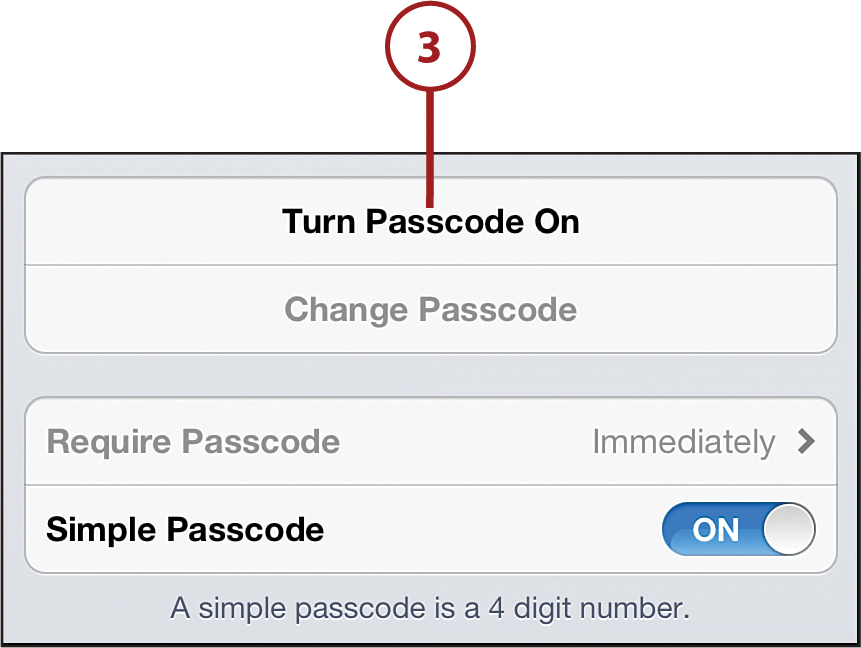
4. Type a four-digit passcode. Make sure this is an easy number for you to remember. (If you forget it, you’ll be locked out of your iPad, too!) Type it again to confirm, and your passcode is set.
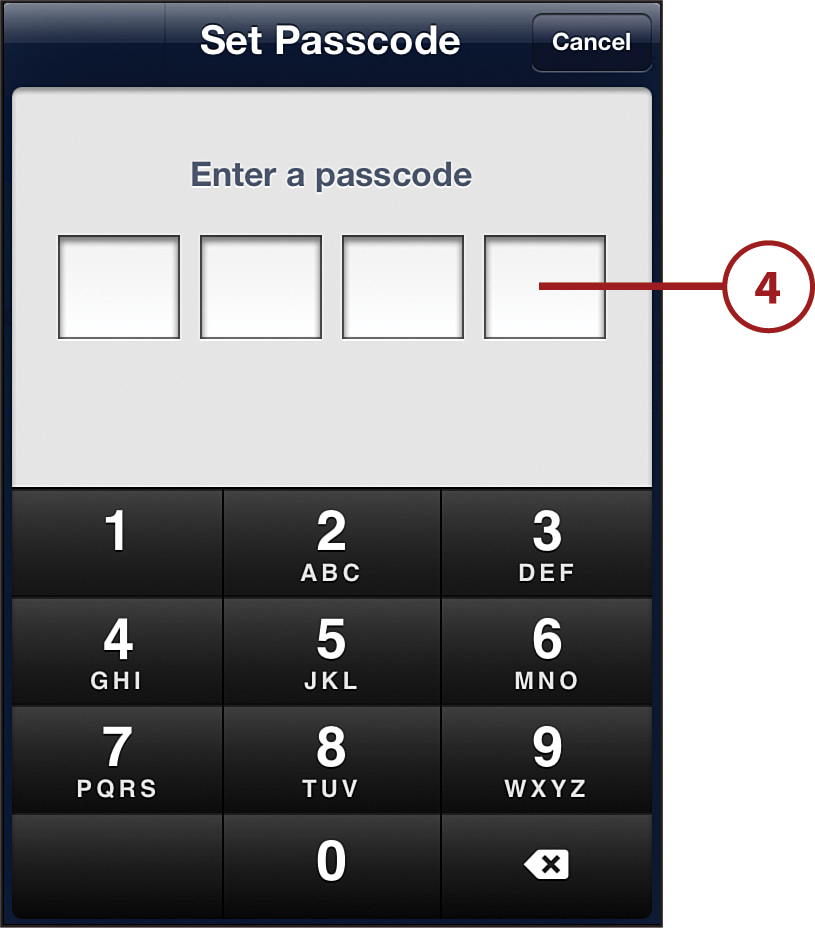
To see how your passcode works, lock your iPad and then try to press the on/off button to wake it up. After you slide to unlock, you have to enter the passcode to unlock the iPad.
Passcode Options
After you’ve set a passcode, you have a number of options you can use with it:
1. Change Passcode—Tap this and enter your passcode if you want to create a new one.
2. Require Passcode—This lets you choose when your iPad asks for the passcode. It immediately asks for the passcode when you unlock the iPad, but you can also choose certain amounts of time after the unlock, if you want.
3. Simple Passcode—Want a more secure passcode than just four numbers? Move this slider to Off, enter your current passcode, and then type any password you want. (If you want some tips on creating a good password, read “Go Further: Good Passwords,” in Chapter 2, “Getting Started: Set Up and Sync Your iPad.”) Just make sure you remember this one, too!
4. Siri—You can use Siri, your voice-activated digital assistant, even when your iPad is locked and secured with a passcode. This means that you can use it without unlocking your iPad—which also means that anyone who gets your iPad can use Siri to send emails or messages or place FaceTime calls. If you don’t want that, move this slider to Off.
5. Picture Frame—If this is On, your iPad can display your photos even when it’s locked. Move the slider to Off to prevent strangers from looking at your photos even if they can’t see any of your other data.
6. Erase Data—If you want to really stop someone who’s trying to get unauthorized access to your iPad, use this setting. When it’s turned on, all the data is erased from your iPad when someone enters the wrong passcode ten times. This is why it pays to remember your passcode: You don’t want to erase all your data just because you forgot your code, do you?

Protecting Your Privacy
Other people’s prying eyes aren’t the only way someone might see your data when you don’t want them to. Many apps, especially those that work with your address book or calendar, can see your data—and maybe even copy it to their computers. Some people don’t care about this, but others take it very seriously. Luckily, if you have iOS 6, your iPad has a built-in way to control what apps can use your personal data.
Ask your parents for help with this one. They’ll have a good idea about what information is OK to share with some apps and what isn’t.
Changing Your Privacy Settings
When you’re running iOS 6 on your iPad, you can choose what apps can access your personal data.
1. Tap the Settings app on your home screen.

2. Tap Privacy.
3. You see a list of the kinds of personal information apps might want to use, including your location, contacts, and calendars. To begin customizing those settings, tap Location Services.
4. Location Services are the iPad’s GPS-style features that figure out where you are geographically and give you information based on that. On this screen, there’s a list of all the apps that use Location Services. Move the sliders to On for the apps that you want to know your location, and switch the ones you don’t to Off. Keep in mind, though, that turning off Location Services in some apps could disable some features (like a restaurant-finder app that wants to tell you where to eat within three blocks of your current location; without Location Services, it can’t).
5. Tap each of the other items—Contacts, Calendar, and so on—to see which apps want access to that data. Move the sliders to On or Off depending on your preference (again, remember that your choice might affect how the app works).
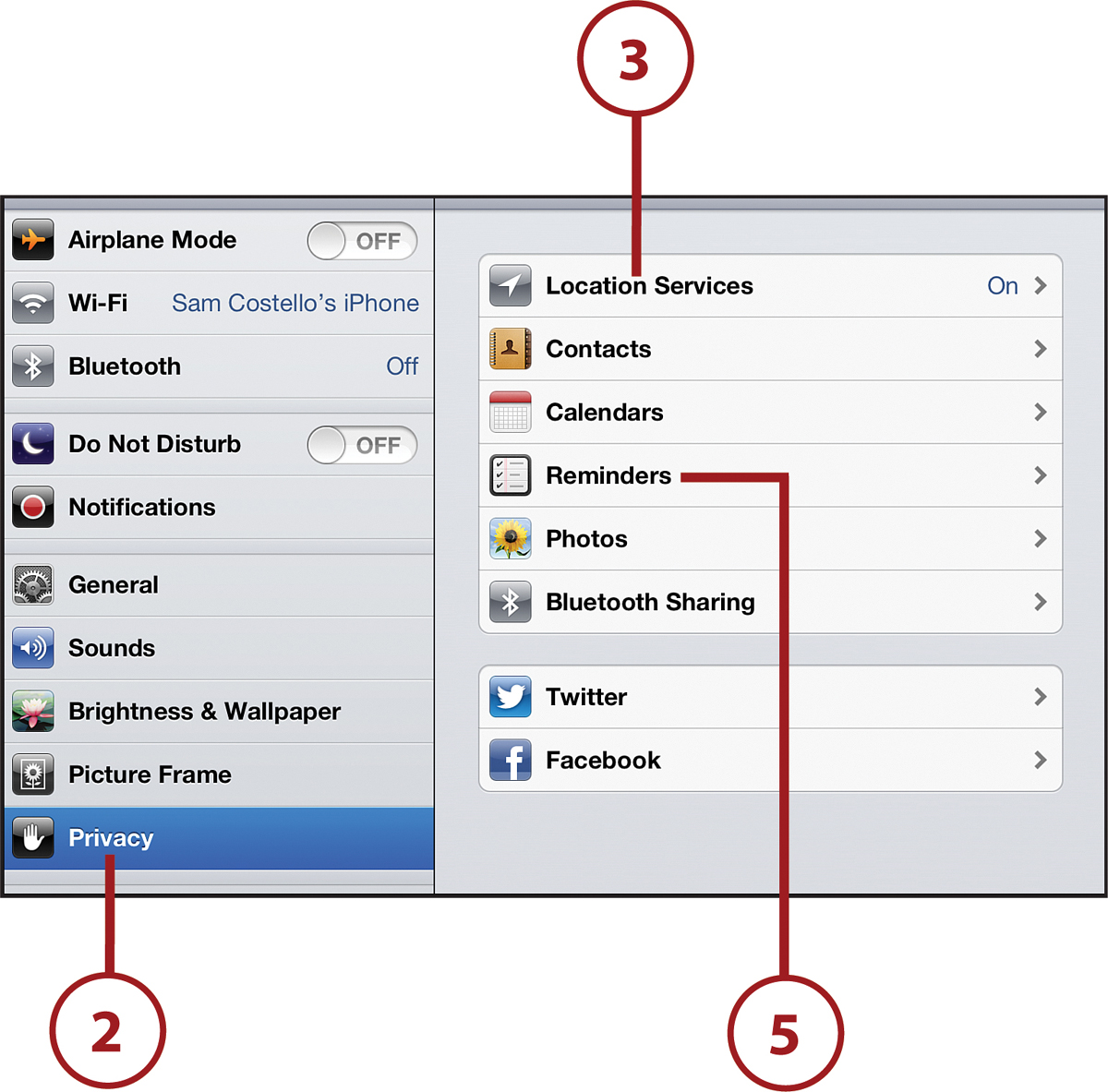
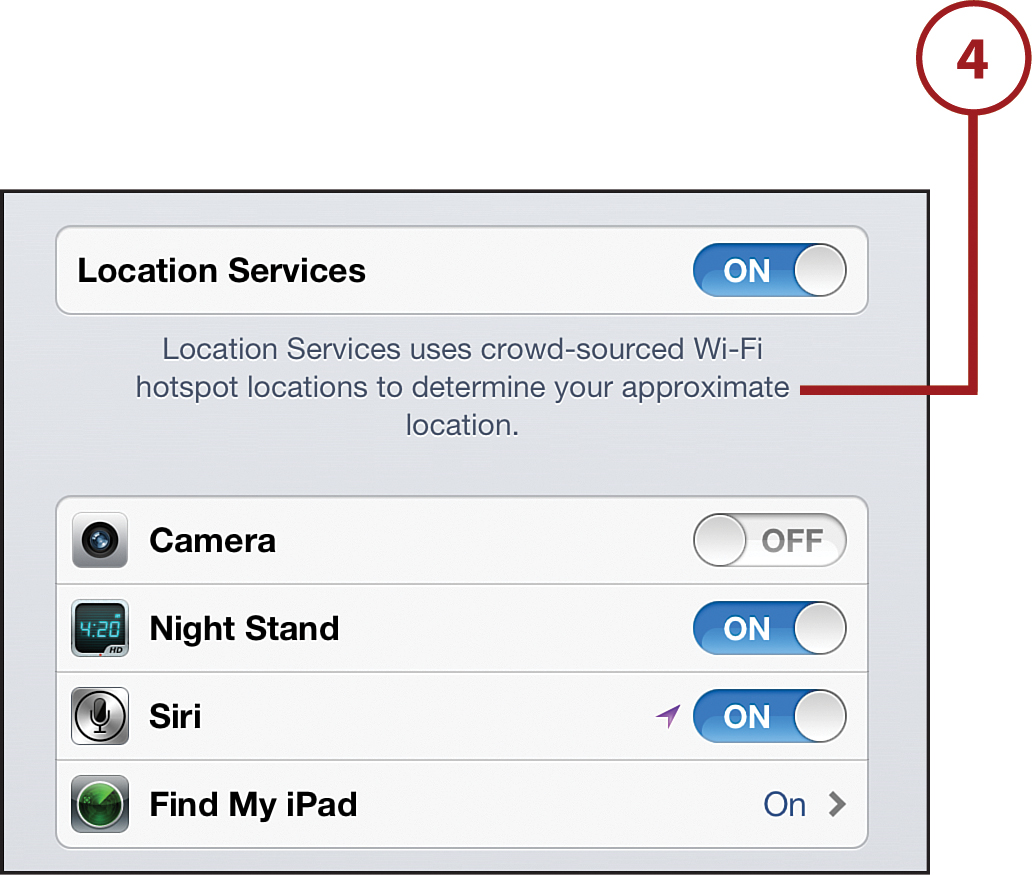
6. When you’re done, press the home button; your choices are saved automatically.
As I’ve repeated many times throughout this book, when it comes to things that happen online or what information, if any, you should share with apps or websites, it’s always smart to talk to your parents about what to do. They’ll have good ideas about how to be safe and secure when you use your iPad.
Caring for Your iPad
The outside of the iPad is pretty tough, but the electronics that make it work on the inside are very delicate. That means you can damage your iPad quite badly if you’re not careful. Here are some important tips to keep in mind to make sure you take good care of your iPad.
Keep It Away from Water and Food
Food and water are the enemies of electronic devices such as the iPad. If they get inside the iPad, they can ruin it. So, even though it might be tempting to use your iPad at the table while you eat, or to read on it in bed while also drinking a glass of water, you shouldn’t. If you’re eating or drinking, put your iPad somewhere else where a spill can’t hurt it.
If you do end up getting your iPad wet, don’t panic. A little water on the front or back probably isn’t a huge deal. Just wipe it off with a soft towel or cloth. If your iPad gets really wet, though, check out the tips for what to do that I cover in Chapter 17.
Don’t Drop It
This might seem obvious, but another way to take care of your iPad is to make sure you don’t drop it. The iPad is tough, but not so tough that it can survive a lot of drops. This is especially true of the screen. The iPad’s screen is made of glass, like a window, and it can break like a window, too. Keep a tight grip on your iPad and pay attention when you’re holding or carrying it so you don’t accidentally drop it. Most iPads can survive small drops, but big ones, or lots of them, can ruin your iPad.
Cases and Screen Protectors
One good way to save your iPad from the occasional drop or the scratches that come from a lot of use is to protect it with a case, a screen protector, or a Smart Cover.
• Cases are like a holder you can slip your iPad into that cushion it from drops and protect it from scratches while still letting you use it. I recommend that pretty much everyone get a case for their iPad. When you get your iPad, ask your parents about getting a case for safekeeping. Cases cost $30–$90.
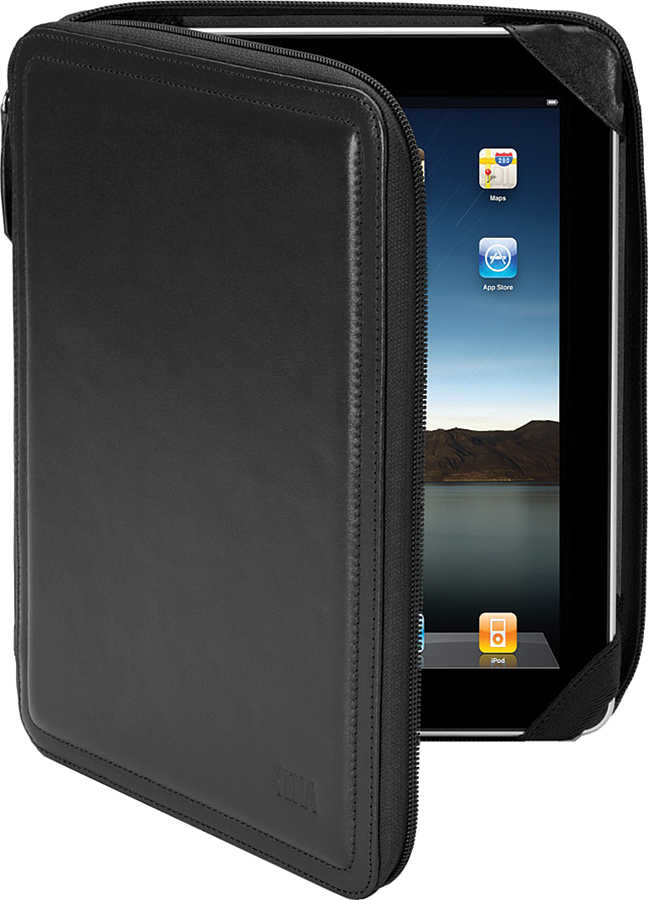
• Screen protectors are clear, thin plastic films that stick to your screen. When you put a screen protector on your iPad, you won’t be able to see it, but it will save your screen from getting scratched (though, if you drop it without a case, a screen protector can’t stop the screen from cracking or breaking). Screen protectors can be pretty tough to install, so ask your parents to help you. Screen protectors cost $5–$20.
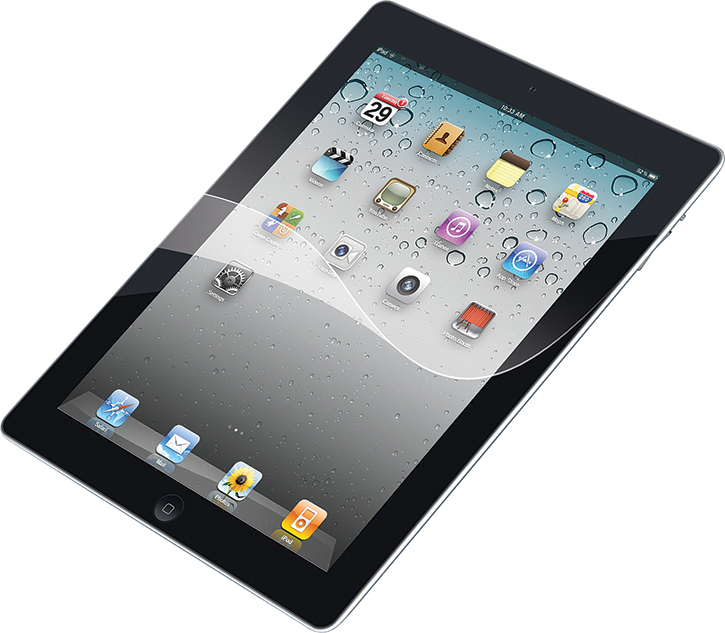
• Smart Covers are a little like cases and a little like screen protectors. They’re colorful and are used to cover an iPad’s screen. What’s neat about them, though, is that they’re magnetic—they just snap onto the iPad—and the iPad knows when a Smart Cover is on. If a Smart Cover is over the screen, the iPad goes to sleep. Open the Smart Cover, and the iPad wakes right up. Pretty cool. Smart Covers cost $39–$69.
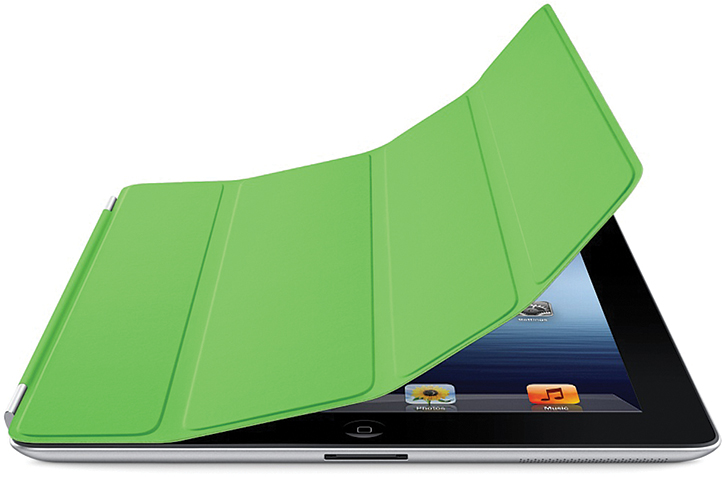
What to Use—and Not Use—for Cleaning
Even if you take good care of your iPad, don’t get food or water on it, and use a case, the screen is still going to get dirty. That’s because you’re always touching the screen, and you have dirt and oil on your skin all the time.
To clean that gunk off your iPad’s screen, though, you can’t use just anything. You want to make sure you don’t accidentally damage the screen when you clean it.
To be safe when cleaning your iPad’s screen, you have two options. First, you can buy a kit for cleaning an iPad screen. These generally include some cleaning spray or foam and a soft cloth for wiping the screen. They usually cost between $10 and $15.
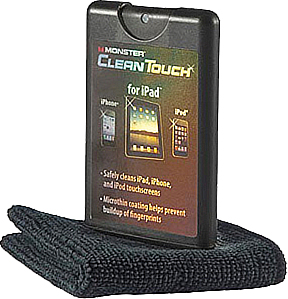
Your second option is to clean it yourself. In this case, you don’t need to buy anything. You just need a soft, lint-free cloth or towel and a little water. First, turn off the iPad and then follow these steps:
1. Lightly wet the cloth under a faucet—emphasis on lightly. This really should be just a bit of water.
2. Wipe the iPad’s screen with the cloth a few times until it looks clean.
3. Never use window cleaner, soap, paper towels, or other cleaning products because they can scratch or damage the screen.
